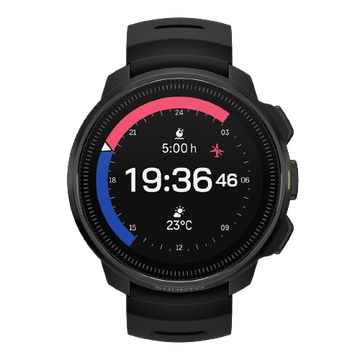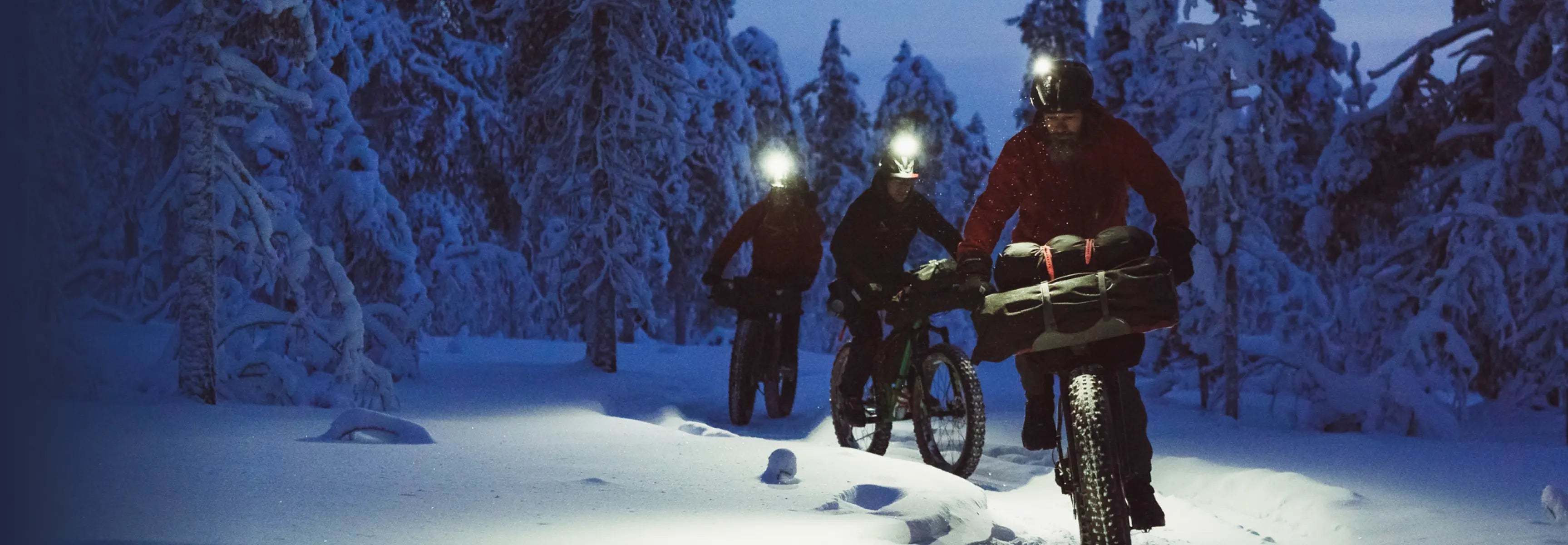
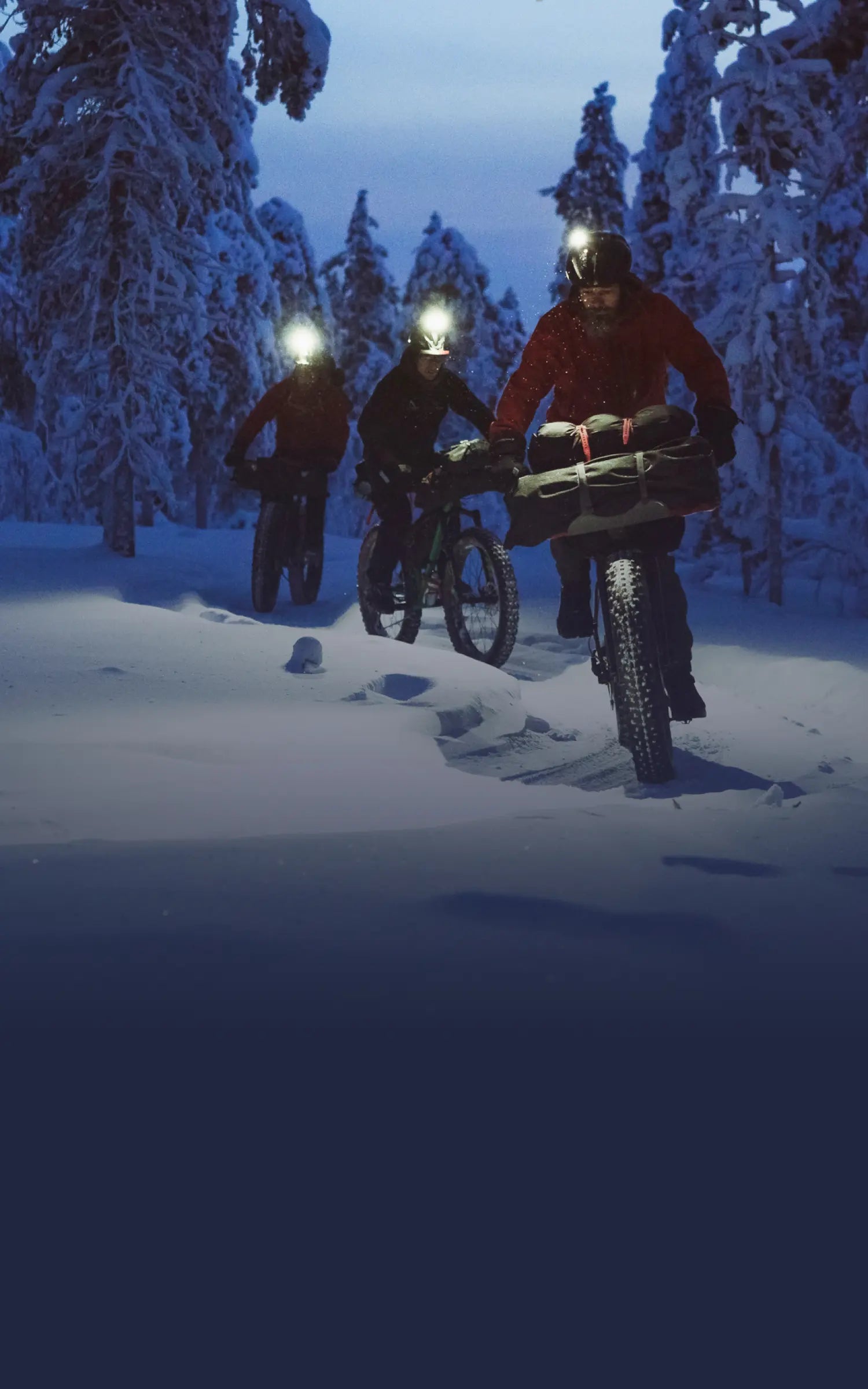
Suunto Blog
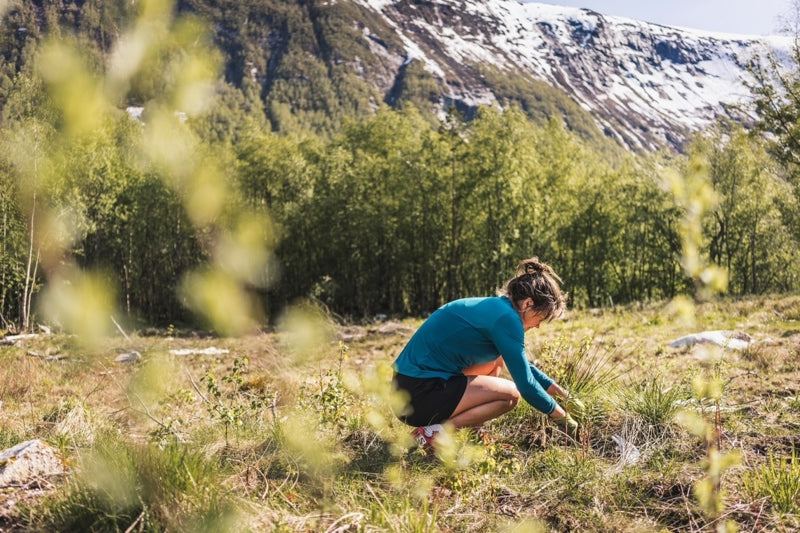
Emelie Forsberg’s principles for a sustainable lifestyle
Growing up in the wild forests of north-east Sweden, Suunto ambassador and mountain runner Emelie Forsberg formed a deep, enduring relationship with natural places and a desire to explore and protect them.
After recently giving birth to her second daughter, she has gradually returned to running and training, and aims to race again soon. Her other great passion in life is working with the earth and understanding natural systems.
The former sky running world champion, mother of two and avid gardener is passionate about sustainable living and minimizes her household’s environmental impacts.
“The most important thing in life is to live sustainably in all ways, in relation to myself and the goals I have, with nature, and my children,” Emelie says. “I think everything is connected. Of course the biggest concern is to take care of the planet we live on.”
With sustainability and climate change urgent topics, with grave implications for humanity, we caught up with Emelie to talk about her approach to it. Read below for her principles.
Learn about Suunto's approach to sustainability
Emelie collecting berries for the freezer to last over winter.
Follow the four ‘R’s
Emelie first learned about these 30 years ago when she was in kindergarten. Now, they are more important than ever.
The four ‘R’s are: reuse, reduce, refuse and recycle.
With 7.5 billion people on the planet and growing we need to be careful how we manage the planet’s resources. Every year Earth Overshoot Day - which marks the date when humanity’s demand for ecological resources and services in a given year exceeds what the planet can regenerate in that year - arrives earlier and earlier. In 2021, it arrived on July 29. Reusing, reducing, refusing and recycling are essential components if we are to preserve, even restore, our planet’s natural systems.
Reuse
There are so many possibilities here. For example, there are the obvious ones like taking a reusable coffee cup with you and using that on the go, or getting reusable cloth shopping bags, rather than using plastic bags. You can also reuse clothing, kitchenware and furniture by buying second hand. Glass jars, plastic containers, milk cartons and so many other household items can be repurposed and reused.
“I often think about my grandparents when it comes to reusing things because for them, and their generation in general, this was very natural,” Emelie says. “I grew up with this principle so it feels very natural to me, and I implement this with my daughters as well.”
Repair
Ok, so we know we didn’t mention this one at the outset and that’s because it’s really just another aspect of reusing - repairing items rather than tossing them out because of damage. The less we put into landfill and reuse the better. Items like shoes, clothes, furniture, sports equipment and more can, with a little skill, be repaired. In cities around the world “upcycling” - the creative reuse of discarded items in such a way as to create a new item often of higher quality or value than the original - has become a popular activity with courses showing people how to approach it. Repairing can be fun!
Reduce
“In general, I try to reduce my impact by reducing unnecessary gear, clothes and other material things,” Emelie says. Reducing can also mean choosing to drive and fly less, and cycling or walking more. It can also mean reducing how much meat and dairy we eat, given methane emitted by livestock is a more powerful greenhouse gas than C02. We can also reduce how much electricity we use by turning unnecessary lights off and shutting down our devices rather than leaving them running. Reducing can also mean buying your vegetables from a local market rather than plastic wrapped items from the supermarket.
Refuse
This one might seem touchy. But if you accept what the vast majority of climate and environmental scientists are saying and the impending disaster human civilization might face as a result of our impacts, then saying no to certain things is a logical and necessary next step. Many people, for example, have decided to stop flying. While others have decided to say no to taking short haul flights. We can also refuse to invest money in organisations that support the fossil fuel industry. In terms of everyday life, we can refuse to buy single use plastics, cheap plastic items, or vegetables packaged in plastic. There are many possibilities.
“Say no to meat, fruit and vegetables produced with a lot of pesticides, non-seasonal food and so on,” Emelie says. “The list can be huge if we want!”
Recycle
This one doesn’t need much explanation and is really the very least we should be doing. But we can get creative about what we recycle. Glass, metal containers, paper and plastic, obviously, plus clothing, batteries, electronic equipment and so much more.
Planting trees helps to capture carbon.
Run a low energy home
Emelie recommends choosing an electricity company based on renewable energy.
At night, turn off heating, lighting and your devices.
Use energy efficient light bulbs.
Take only short showers.
When you use the oven, take the opportunity to cook many things at once rather than heating it multiple times over the week.
Only use the dishwasher or washing machine for full loads.
Eat plant based, or as much as possible
The UN and multiple studies have found one of the best things we can do to stop climate change is adopt a plant based diet. Less livestock animals belching and farting methane the better. It also means less land use for grazing, and more space for forests to regrow. If going full plant based doesn’t work for you, then like our other ambassador Greg Hill and many people try being a weekday vegetarian - only eat meat on the weekend.
Eat seasonally
Eating seasonally and eating locally are two sides of the same coin. “Locavores”, like Emelie, choose to eat what is grown nearby, season to season, keeping to a minimum their “food miles” - how far their food has had to travel to arrive on their dinner plate. This means less resources are required to transport and store food. Ask yourself whether you really need to eat those strawberries in the middle of winter or whether you can wait until early summer and buy them from local producers?
Eat organic
Scientists have sounded the alarm about what they call the insect apocalypse - steep bug population declines because of stresses caused by humans. Sure, bugs can be annoying, but they play crucial roles in our ecosystems. Bees and other pollinators, for example, pollinate nearly 75% of the world’s plants that produce 90% of the world’s food.
Yet their numbers have been decreasing, and one of the reasons is the use of insecticides; nasty chemicals designed to eliminate insects that threaten crops. The problem is they kill much more than the targeted pest.
“So important to support farmers who don’t use pesticides,” Emelie says. “Pesticides destroy the living ecosystem.”
Grow your own food
“For me this is a way to connect to nature and realise how important it is that we take care of it,” Emelie says. “It also gives me so much respect for the products of organic small scale farms and farmers and their work. I would never ever let any veggies I grow in my own garden go to waste, and I bring this awareness into how I respect veggies I buy as well. I know the process of growing the food!”
If you do start your own garden, Emelie encourages growing flowers in and around it to help the bees!
Small caveat:It’s also important to point out that while all of these measures can help reduce our individual emissions and other environmental impacts, the challenge of climate change is too big to be solved by individuals alone. System change is required.
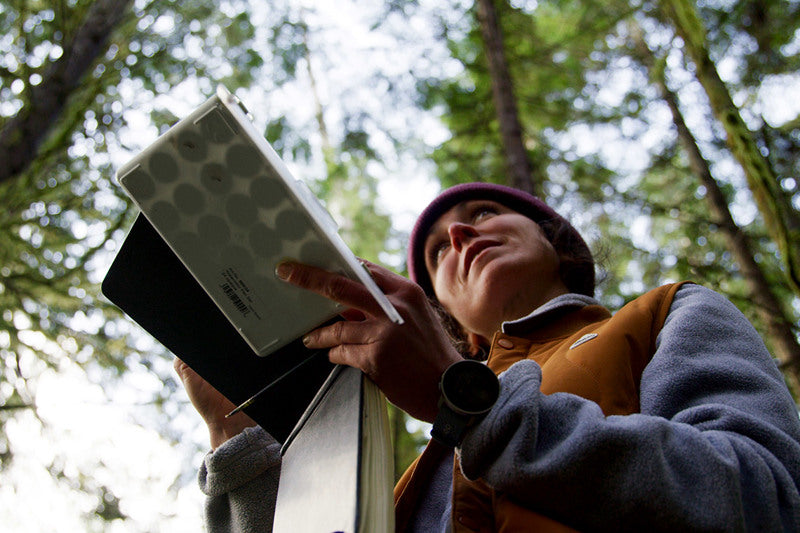
Peak Creator Series – The Artist
A snowboard guide by winter, and a passionate artist inspired by nature Jessa Gilbert lives to be in the outdoors.
This is the fourth in our Peak Creator film series, which celebrates creative people inspired by the great outdoors. We talk to four creators and find out what inspires their creative work.
As a teen, Jessa learned to snowboard on the Catamount in the Catskills in upstate New York and before she knew it she was competing in freestyle. She racked up five knee surgeries by the time she was 27 and was eventually told she could never run or board again.
She thought packing her painting kit might force her to slow down - it didn’t - but it did result in her capturing the stunning landscapes she shreds in and has led to her creating graphics for brands.
“We are in a time where we are starting to remember that public art is important,” Jessa says. “The beauty of public artwork is that you are creating artistic environments.”
Click play below and watch Jessa share her creative inspiration.
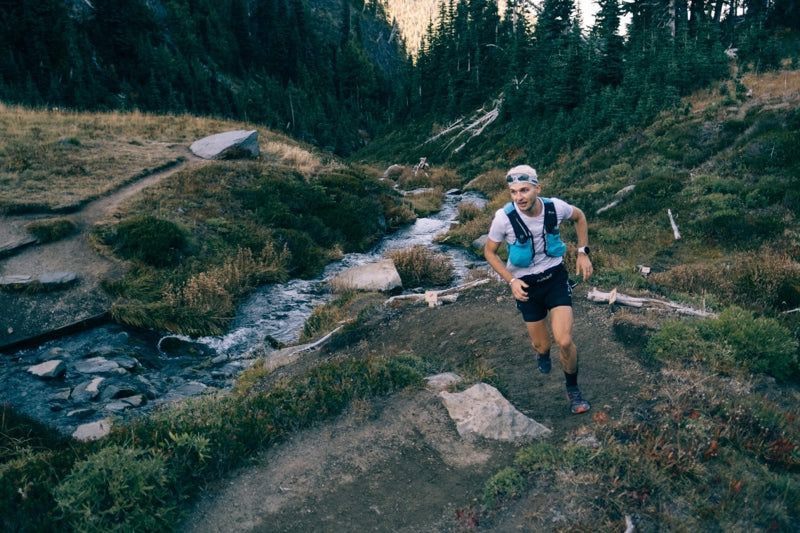
Championing diversity on the trail
The typical human eye can see two to three million colors and an open human mind can appreciate an equally diverse array of people, lifestyles, identities and sexual orientations. For Suunto athlete and American trail runner Ryan Montgomery it’s this diversity that makes the world such a beautiful place.
The 27-year-old recently returned to the US after travelling to Chamonix, France where he ran the 55 km OCC (Orsières-Champex-Chamonix) ultra run. Wherever he competes, Ryan champions diversity any way he can, even if it’s simply by approaching runners that appear new or alone and striking up conversation to make them feel welcome.
He consults with organisations and brands on how to build welcoming and diverse communities. After all, he knows first hand how difficult it is to feel comfortable in your own skin in a hostile environment.
Ryan celebrates setting a FKT record on the 150 km Wonderland Trail back in October, 2020. (Photo by Nick Danielson)
Finding freedom on the trail
Ryan grew up in Alaska and Seattle and struggled to find his place in a decidedly conservative milieu. He realised he was queer in grade school, and hid it from friends and family for fear of what their reaction might be. “My whole environment was quite homophobic,” Ryan says. “So coming out was quite the journey.”
Ryan ran cross-country at high school and even then gravitated towards long distance running. At age 14 he told his running coach he wanted to run a marathon and she told him he couldn’t do it and would only hurt himself if he tried.
“Growing up as a gay boy and having so much of my identity not being seen or validated, it just felt like another nail in the coffin,” Ryan says. “So I took it as a personal challenge and was like ‘let me show you coach’! I did it and it was a great experience. Running allowed me to find a headspace where I could explore and express myself.”
One year later and inspired by the challenge of endurance running, Ryan applied to go on an expedition with not-for-profit Impossible2possible, which empowers youth to go beyond their perceived limitations. He was accepted and went on an expedition to the Bolivian mountains where, with a group of other youth, he ran a marathon every day for five days.
“It was such an eye opening experience where I learned not only so much about my body, but my vision for what I wanted to accomplish in my running career,” Ryan says. “And it was when I first knew I wanted to run ultra marathons.”
Going ultra distance
In 2017, Ryan ran his first 100-mile race, the Wasatch Front 100, and finished in 27 hours. Inspired by the distance, he concentrated on improving his speed and two years later he broke the 13-hour mark for the 100-mile distance at the 2019 USATF (USA Track and Field) National Championships.
Since then, he has achieved a lot, including placing first at the 2019 Quicksilver 100k, coming second at the 2019 Tahoe 200-mile Endurance Run, and, in 2020 setting an FKT (fastest known time) record on the 150 km Wonderland Trail in Mt Rainier National Park, to name a few.
He loves the trail and ultra running scene, and overall has felt welcome as part of it, but says the sport has work to do to become an inclusive and friendly place for people from all walks of life.
“There’s a lot of people that have been so welcoming and, surprisingly, the trail community is more queer, and gay, than we give it credit for,” Ryan says. “And that’s the problem, those are not stories that are being told. The downside is there’s still so much homophobia.”
Being a champion of change
Ryan works with organisations and brands in the outdoor sector to help them better understand and promote diversity. He says it comes down to more richly reflecting their various communities and telling stories that are too often neglected or ignored. For too long, the outdoor sports industry - due to its European and North American power base - has focused on marketing that features and promotes straight white people and athletes to the exclusion of everyone else.
But, Ryan says, change is in the air in the US and across the world. More and more people, organisations and brands, even entire industries, are waking up to the fact they have neglected groups in their communities, particularly people of colour and LGBTQ people, and it’s time to tell their stories and to advocate for an inclusive society.
“We need to celebrate all the different people in our communities and be very, very cognizant of how we're doing that in our engagement and also our marketing,” Ryan says. “We need to find explicit and concrete ways to show up and support and welcome people.”
Images by Nick Danielson
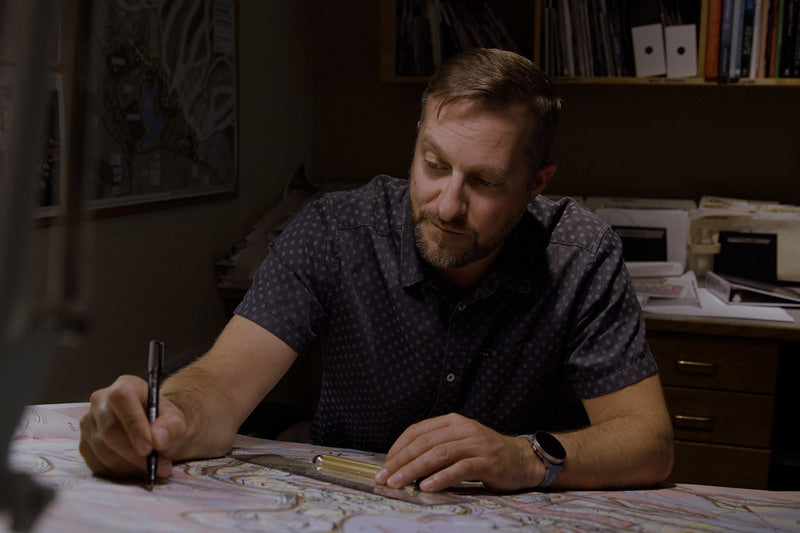
Peak Creator Series – The Architect
In this third film of our Peak Creator series we profile landscape architect Ryley Thiessen who shares how he designs mountain resorts that bring people closer to nature.
The Peak Creator film series celebrates creative people inspired by the great outdoors. We talk to four creators and find out how nature inspires them.
Ryley specializes in designing four season resorts around the world. He grew up in the countryside and from an early age knew he wanted to work with the earth.
The essential principle for this work is balance: “It’s working with nature and finding that balance where you’re not taking too much,” he says.
Click play below and watch Ryley share how he approaches his work.
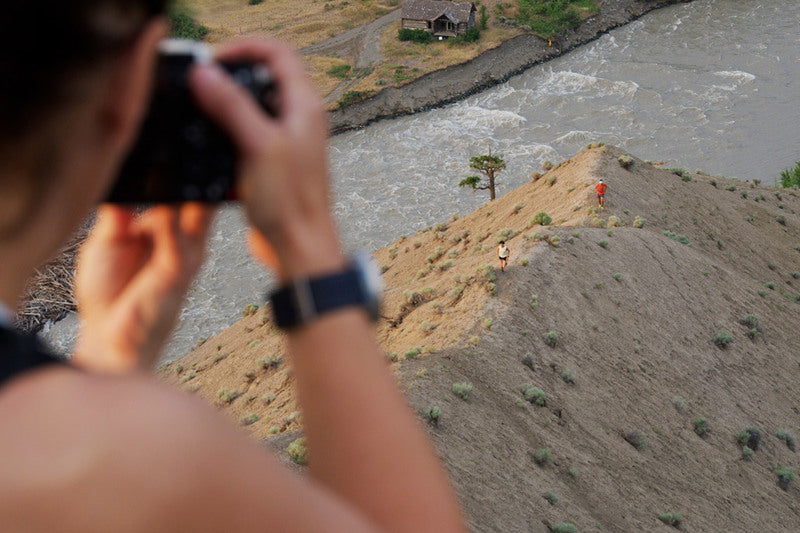
Peak Creator Series –The Photographer
Originally a graphic designer, once Angela Percival got a taste of outdoor adventure photography there was no going back - she decided to focus on creation.
This is the second in our Peak Creator film series, which celebrates creative people inspired by the great outdoors. We talk to four creators and find out what inspires their creative work.
Now Arc’teryx’s senior outdoor photographer, she had to work hard to break into a profession dominated by men and now her work speaks for itself.
“What inspires me creatively is just being outside, period,” Angela says. “Being in the mountains, yes, being in the alpine even more, but I just need to be outside.”
Click play below and watch Angela share her creative inspiration.
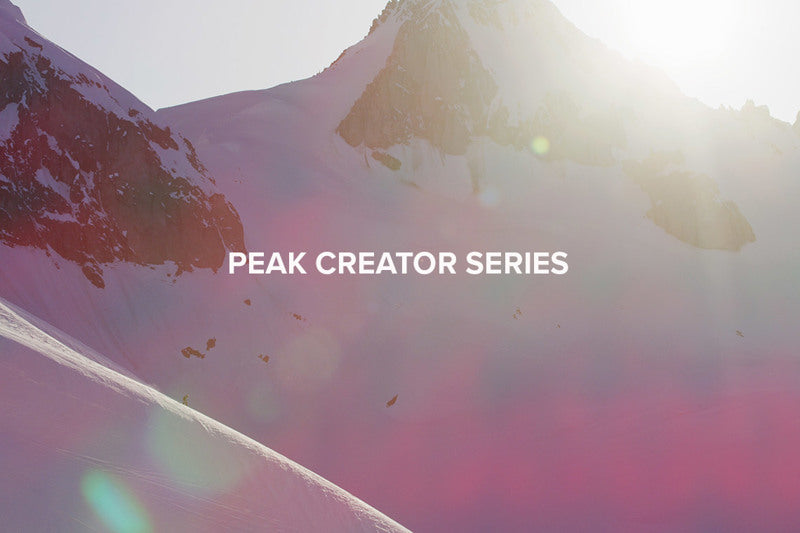
Suunto celebrates peak creators
Since forever, the great outdoors and its misty forests, silhouetted mountain ranges, and craggy peaks have inspired creatives of all ilk, whether poet, painter, musician or photographer. The awe nature strikes in us gets the creative energy flowing. The resulting work has, in some cases, inspired the masses and shapes how we see and protect the natural world.
At Suunto we believe this is worth celebrating. So we initiated our Peak Creator film series, in which we met four creators - a trail builder, a photographer, an architect and an artist - and found out how the natural world inspires what they do. We’ll publish a short film about each of them in the coming weeks.
Meet photographer Angela Percival, architect Ryley Thiessen, artist Jessa Gilbert and trailbuilder Dan Raymond in the Peak Creator Series.
The first film up, the trailbuilder sees his work more as uncovering what’s already there; next up, the photographer admits she’d rather be out shooting than indoors editing; then the architect explains how his mountain resorts bring people closer to nature; finally, we meet the artist who packs her painting kit and heads out for epic free rides.
Stay tuned for each film as it drops. And get your own creative juices flowing!
Watch Peak Creator Series episode 1 – The Trailbuilder
Watch Peak Creator Series episode 2 – The Photographer
Watch Peak Creator Series episode 3 – The Architect
Watch Peak Creator Series episode 4 – The Artist







































